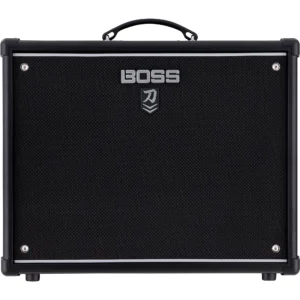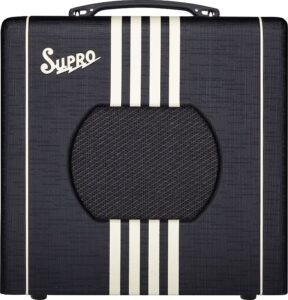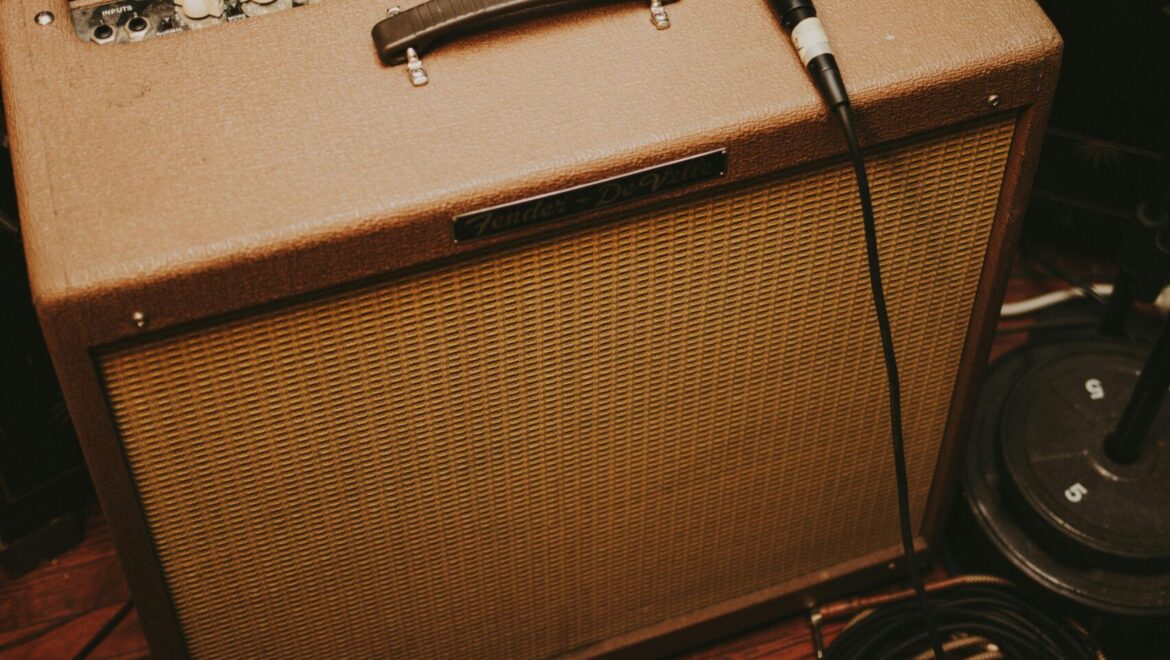Learn About Our List Of Top Guitar Amps Under $500

Looking for a killer guitar amp without emptying your wallet? You’re in luck! Here are some top-notch options under $500 that deliver fantastic sound, versatility, and features. The right choice for you depends on your playing style, and what venue you’ll use your new amp in. Let’s dive in:
Boss Katana 100 MKII

The Boss Katana 100 MKII is a crowd favorite as a top amp under $500 for a reason. This amp is packed with awesome amp models and a full suite of Boss’ studio-quality effects. Whether you’re jamming at home, recording in the studio, or rocking out on stage, the Katana 100 MKII has got your back. With a range of built-in effects and versatile controls, you can dial in your perfect tone.
Supro Delta King 8

Don’t let its 1-watt power rating fool you—the Supro Delta King 8 packs a serious punch. This little tube amp can get surprisingly loud, especially when you crank it up. It’s perfect for blues and rock players who love that gritty overdrive sound. Who knows – if this is your choice, you could end up on the best blues guitar player list. Plus, its compact size and vintage look make it a great choice for home practice and recording – this makes it an easy choice as one of the top guitar amps under $500.
Orange Super Crush 100 Head

Need an amp that can handle gigs? The Orange Super Crush 100 Head is your go-to under $500. This beast offers plenty of power and headroom for pedals, making it perfect for larger venues and band performances. With its signature Orange tone and versatile controls, you can go from clean to high-gain distortion with ease. If you’re after a powerful amp that won’t break the bank, the Super Crush 100 Head is a solid choice. Just don’t forget a cab!
Positive Grid Spark 40

The Positive Grid Spark 40 is a 40-watt smart practice amp loaded with cool features. With 30 amp models and 40 effects, it offers a wide range of tones for different playing styles. One standout feature is the Auto Chord, which helps you play along with your favorite songs by showing real-time chord transpositions. The Smart Jam feature is also a game-changer, generating dynamic backing tracks based on your playing. This makes the Spark 40 a versatile and handy practice tool. It’s no shocker why this is the #1 best selling practice amp.
These top guitar amps under $500 offer incredible value for guitar players looking for quality sound and versatility without spending a fortune. Whether you need an amp for practice, recording, or live performances, these options have you covered. Just don’t forget to give us credit when you use one of these amps to write a best selling album. Explore each amp’s unique features to find the one that fits your style and musical needs.
Factors Influencing Guitar Amp Tone
Getting that sweet guitar tone isn’t just about the gear—it’s about knowing what makes it tick. Let’s break down the key elements that shape your guitar amp tone.
It’s All About the Player
First off, it’s all about the player. You are the biggest factor in nailing that perfect tone. A seasoned guitarist can make even a basic setup sound amazing, while a newbie might struggle with top-tier gear. So, work on your chops and style; it makes a world of difference.
Speaker Quality and Emulators
For electric guitars, the speaker or the quality of the IR (Impulse Response)/cabinet emulator in direct input (DI) systems is huge. Think of the speaker as the voice of your amp. Even a cheap guitar can sound pretty good through a high-quality speaker or IR system. Swapping out speakers can change your tone more than switching amps. So, if you’re looking to upgrade, consider investing in a top-notch speaker or emulator.
Pickups: The Heart of Your Tone
The type of pickup in your guitar is like the DNA of your tone. Single-coils, humbuckers, active or passive—they all bring their own flavor. Each type has its own sound signature, so pick the one that matches your style and genre.
Wood Types: The Great Debate
Contrary to what some might say, the wood type in electric guitars doesn’t drastically change your tone. Sure, different woods can add subtle nuances, but factors like rigidity, construction, and layering have a bigger impact. So, don’t stress too much about the wood—focus on other elements first.
Understanding these factors helps you make smarter choices when picking your gear. Remember, while your equipment shapes your sound, your playing technique is the real game-changer. Experiment with different pickups, speakers, and settings to find that unique tone that fits your musical vibe.




